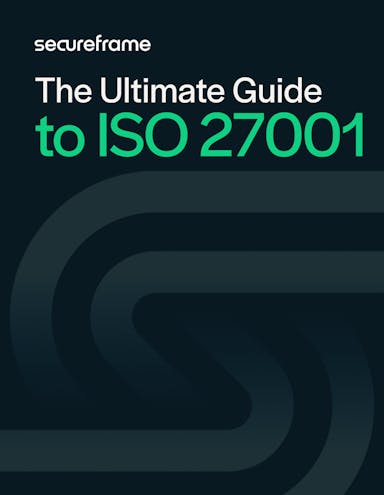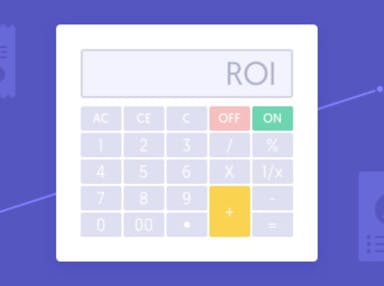
ISO/IEC 27001 Explained: Complying with This International Standard for Information Security
Anna Fitzgerald
Senior Content Marketing Manager
Cavan Leung
Senior Compliance Manager
According to the latest report by the World Economic Forum, the cybersecurity landscape is becoming increasingly complex due to escalating geopolitical tensions, emerging technologies, supply chain interdependencies, and cybercrime sophistication. Combined with the widening cybersecurity workforce and skills gap, these factors are making it extremely challenging for organizations to manage cyber risks effectively.
As the complexity of cyberspace grows, regulations and commercial frameworks are increasingly seen as an important factor for improving cybersecurity posture and building trust with customers and other stakeholders. This is particularly true of ISO/IEC 27001, one of the most widely recognized and adopted information security standards worldwide.
Whether you're just hearing about ISO/IEC 27001 from a customer, comparing it to other frameworks, or preparing for certification, this guide will cover everything you need to know.
What is ISO/IEC 27001?
ISO/IEC 27001 is a globally recognized information security standard developed by the International Organization for Standardization (ISO) and the International Electrotechnical Commission (IEC) to help organizations protect sensitive information in a systematic way through the adoption of an information security management system (ISMS).
An ISMS refers to all the people, systems, technology, processes, and information security policies that protect sensitive data across the entire organization. Establishing, implementing, maintaining, and continually improving an ISMS according to this international standard can preserve the confidentiality, integrity and availability of information and provide assurance to customers and other interested parties that risks are adequately managed.
While often referred to as ISO 27001, ISO/IEC 27001 is the official abbreviation for this international standard on information security management.

Who does ISO/IEC 27001 apply to?
The ISO/IEC 27001 is designed to be applicable for organizations of any size and industry and scalable so that organizations can continue to use the standard as their needs change over time. That means small startups to multinational enterprises in industries ranging from information technology to finance, healthcare, legal services, cloud computing, and more can use ISO/IEC 27001 as a flexible yet rigorous blueprint for information security management.
Any organization may choose to implement ISO/IEC 27001 to secure information in all forms in one place, protect against cyber attacks, reduce human error, build customer trust, meet growing regulatory demands, or a combination of all these reasons.
Let’s take a closer look at the purpose of ISO/IEC 27001 below.
What is the purpose of ISO/IEC 27001?
The core purpose of ISO/IEC 27001 is to provide organizations with a framework that clearly dictates what they need to do to protect their most valuable asset: their customer information.
As cyber attacks grow more frequent and sophisticated, this is imperative for all organizations. Those that adopt ISO/IEC 27001 will have a structured and repeatable process in place for managing uncertainty and keeping information undamaged, confidential, and available.
ISO/IEC 27001 is not a check-the-box compliance framework. It stands out among other frameworks because it promotes a holistic approach to information security. It requires organizations to evaluate and improve security not just at the technical level, but across people, processes, and systems. This includes vetting vendor risk, managing employee access, documenting internal policies, and embedding security throughout the organization’s culture and workflows.
As a result, ISO/IEC 27001 doesn’t just reduce risk—it enhances operational excellence and cyber resilience so that organizations become more risk-aware and proactive in identifying, assessing, and mitigating threats to their information, especially as these threats multiply and evolve.
While complying with ISO/IEC 27001 demonstrates that an organization has implemented an ISMS based on internationally recognized best practices, going a step further and getting ISO/IEC 27001 certified provides third-party validation that the ISMS is well-designed, well-managed, and capable of protecting sensitive information.
This assurance can be a powerful differentiator in global markets (especially in the EU and Asia), a trust signal in partnership negotiations, and a baseline for meeting requirements for other frameworks like GDPR, HIPAA, and NIS2. These factors—and more—make ISO 27001 certification worth the investment for many organizations.

In short, ISO/IEC 27001 is designed to enable organizations to manage information securely in an evolving threat landscape and to demonstrate that ability and commitment to do so to customers and other stakeholders.
To understand how ISO/IEC enables organizations to do so, let’s take a closer look at its requirements and scope.

The Ultimate Guide to ISO 27001
Whether you're just hearing about ISO 27001 for the first time or preparing for certification, this guide has all the details you need to understand how to build a compliant ISMS and achieve certification.
What does ISO/IEC 27001 require?
To fully understand the value of ISO/IEC 27001, we have to dive deeper into the framework’s scope and structure.
One of the reasons ISO/IEC 27001 is so widely adopted is because of how thorough and methodical it is. It doesn’t just address one part of your organization. It offers a comprehensive, risk-based approach to managing various aspects of information security across people, processes, and technology.
To better understand the breadth and depth of this framework, we have to look at its requirements.

Clauses 4–10: The core requirements of an ISMS
Clauses 4 through 10 form the foundation of the standard. These are the requirements every organization must meet in order to achieve certification:
- Clause 4: Context of the organization – Define your organization’s internal and external environment, stakeholders and their needs and expectations, and ISMS scope.
- Clause 5: Leadership – Assign top-level accountability for security and ensure leadership involvement in establishing an information security policy and roles and responsibilities.
- Clause 6: Planning – Develop plans for managing risks and achieving security objectives.
- Clause 7: Support – Ensure sufficient resources, awareness, communication practices, and documentation are in place to support the ISMS.
- Clause 8: Operation – Conduct a risk assessment and implement and manage the security controls that address your identified risks.
- Clause 9: Performance evaluation – Monitor, measure, audit, and review your ISMS to ensure it remains effective.
- Clause 10: Improvement – Have processes in place to identify and address nonconformities and continuously improve the ISMS over time.
These clauses are designed to be flexible and scalable, making them applicable to organizations of all sizes and across industries.
Now that we have a better sense of the requirements and overall framework, let’s take a closer look at how ISO/IEC 27001 compares to other cybersecurity frameworks.
ISO/IEC 27001 vs other standards: How does it compare?
Before implementing ISO/IEC 27001, many organizations want to understand how it compares to other widely used security frameworks. Below we provide an overview of how it compares to SOC 2 as well as other ISO standards.
ISO/IEC 27001 vs SOC 2
ISO/IEC 27001 and SOC 2 are often compared because they both focus on protecting customer data from unauthorized access, cyber attacks, and other vulnerabilities and are often requested from customers who want assurance of their ability to do just that. However, they differ significantly in target market and flexibility.
- Target market: Most notably, SOC 2 is generally more known in the United States whereas ISO/IEC 27001 is generally more recognized internationally.
- Flexibility: SOC 2 is also more flexible, allowing companies to choose which Trust Services Criteria to include in their audit (aside from Security, the only required TSC) and design a system of 70-150 internal controls that support their selected TSC. ISO/IEC 27001 is much more prescriptive, requiring organizations to implement 93 controls (known as “Annex A controls”) and a substantial amount of documentation with exact language.
There are other differences between SOC 2 vs ISO 27001 in terms of audit scope, cost, process, and timeline as well, but these two tend to be the biggest factors in helping organizations decide which to pursue.
ISO/IEC 27001 vs ISO 9001
ISO/IEC 27001 is the best-known standard for information security management by the International Organization for Standardization (ISO). ISO 9001, on the other hand, is the best known international standard for quality management systems developed by the same organization.
That means that ISO 27001 focuses on information security and helping organizations safeguard customer data, whereas ISO 9001 focuses on product and service quality, customer satisfaction, and continuous improvement to help organizations deliver flawless products or services time after time.
Although they serve different purposes, these two standards can be integrated effectively. Many organizations choose to align or certify against both to strengthen operations and demonstrate excellence in both quality and security management.
ISO/IEC 27001 vs ISO 27000
In researching ISO/IEC 27001, you may have also stumbled on ISO/IEC 27000 and wondered if it was a spelling error.
ISO 27000 is a standalone standard but it is typically used as shorthand for the ISO/IEC 27000 series, which ISO/IEC 27001 is part of. In fact, this series comprises over a dozen standards designed to help organizations to improve their information technology security by building and managing a strong ISMS.
ISO 27000 specifically provides foundational terms and concepts, making it a useful reference for organizations starting their ISO 27001 journey. It precedes ISO 27001 in the ISO 27000 series.
Now let’s take a closer look at how ISO 27001 compares to two other standards in the ISO 27000 series.
ISO/IEC 27001 vs ISO 27017
Both ISO 27001 and ISO 27017 belong to the ISO/IEC 27000 series.
While ISO/IEC 27001 outlines general information security controls, ISO 27017 tailors them specifically to cloud computing environments. It outlines responsibilities for both cloud service providers and customers and includes best practices for managing cloud-based assets and incidents.
As with ISO 9001, many organizations choose to adopt both frameworks. ISO 27017 is actually designed to be used in conjunction with ISO 27001 to create the most robust ISMS.
ISO/IEC 27001 vs ISO 27701
ISO 27701 is one of the newest ISO standards. Think of it as a privacy extension to ISO 27001. It adds specific requirements for managing personally identifiable information (PII), making it particularly relevant for organizations subject to data protection laws like GDPR or CCPA.
Building on the ISMS framework, ISO 27701 introduces new controls and documentation requirements to help organizations establish, implement, maintain, and continuously improve a Privacy Information Management System (PIMS).
Organizations that already meet ISO 27001 requirements will find it easier to extend their compliance efforts to meet ISO 27701 requirements.
Together, these standards offer a complete toolkit for building and maintaining a resilient information security program.
A breakdown of the ISO/IEC 27001 certification process
Now that you have a better understanding of the ISO/IEC 27001, its purpose, and how it compares to other standards, you might be wondering what’s actually involved in getting certified.
The ISO/IEC 27001 certification process is comprehensive by design. It requires organizations to build a risk-based ISMS, demonstrate that it’s operating effectively through rigorous documentation, and undergo multiple audits to ensure it’s meeting ISO/IEC 27001 requirements.
While that may sound intimidating, it’s a clearly structured process—and one that pays off through stronger security, increased customer trust, and competitive differentiation.
Here’s an overview of the certification process:

1. The readiness assessment and internal audit
Before you schedule your formal audit, your organization will go through a readiness phase. This involves building out your ISMS, conducting a full risk assessment, selecting and implementing controls, and preparing your documentation. At the end of this phase, most companies complete a mock audit or readiness assessment—often with the help of an ISO 27001 consultant or an automated compliance platform—to catch any obvious gaps before engaging a second- or third-party auditor.
Next comes the internal audit. Despite the name, this audit must be conducted independently. Meaning, it can’t be performed by the same person or team managing your ISO/IEC 27001 program. Independence is a key principle of the standard, and using the same individual for both roles would result in what ISO calls a nonconformity. Since these audits can be performed by an organization’s own internal auditor or an outside party, they are referred to as a second-party audit.
The goal of the internal audit is to catch any major or minor nonconformities with your ISMS before you proceed to the next step: the certification audit. If any issues are identified, you’ll create and implement a corrective action plan. Resolving these nonconformities up front helps ensure a smoother experience with your external auditor and avoids costly delays.
2. The Stage 1 audit: Documentation & readiness review
Once your internal audit is complete and any nonconformities have been addressed, your organization will schedule its first formal audit with an accredited third-party certification body. This is called the Stage 1 audit and it typically takes only 1-2 days.
At this stage, the auditor will review your ISMS documentation and policies to verify that they align with the ISO/IEC 27001 requirements. This includes reviewing your risk assessment, Statement of Applicability, ISMS scope, and security objectives. They may also take a light look at some of your controls to evaluate their design.
Stage 1 is not a full audit. Instead, it functions more like a checkpoint for the auditor to assess whether your organization is ready to move forward with Stage 2, the full audit. If minor issues are discovered, your auditor will provide feedback, and you’ll typically have a month or two to remediate those items before scheduling the Stage 2 audit.
3. The Stage 2 audit: Full control implementation review
The Stage 2 audit is the most in-depth part of the ISO 27001 certification process. It usually takes several days to a full week, depending on the size and complexity of your organization.
During this stage, the auditor will examine whether your ISMS is functioning as described and whether your controls are not just documented but fully implemented and operating effectively. This involves:
- Reviewing logs, records, and evidence of day-to-day activity
- Interviewing employees and leadership across departments
- Evaluating how your organization handles incidents, access management, asset tracking, and risk mitigation
- Confirming that internal audits, management reviews, and corrective actions have taken place as required
This is where all of your preparation pays off. A well-run ISMS with clear documentation, stakeholder buy-in, and up-to-date records will make this phase go much more smoothly. And if all requirements are met, your auditor will issue your organization an ISO/IEC 27001 certification, which is valid for three years.
4. Surveillance and recertification audits: Maintaining ISO/IEC 27001 certification
Passing these audits to get certified is just the beginning. To maintain ISO/IEC 27001 certification, your organization will need to demonstrate ongoing compliance through periodic audits over the three-year certification cycle.
In the first and second years after certification, your external auditor will conduct surveillance audits. These are typically shorter than the initial Stage 2 audit, but still thorough. The auditor will assess:
- Continued conformity with ISO 27001 clauses and Annex A controls (divided between years 1 and 2)
- Progress on any previously identified nonconformities to ensure they’ve been properly remediated
- Evidence that your ISMS is still operating effectively and adapting to new risks
These audits help ensure that your organization isn’t just meeting requirements at a point in time, but continuously improving its security posture.
At the end of the three-year certification cycle, you’ll undergo a full recertification audit. This process is similar to your original Stage 2 audit and requires you to demonstrate:
- Ongoing compliance with all ISO/IEC 27001 requirements
- Evidence of updates to your risk assessments and controls
- A track record of continuous ISMS improvement and responsiveness to changes in the threat landscape
Now that we’ve covered the ISO/IEC certification process, let’s walk through some key readiness steps.
How to get ISO/IEC 27001 certified
ISO/IEC 27001 certification involves more than just ticking boxes. It requires a strategic, structured approach to building and documenting an information security management system (ISMS) that fits your organization’s risk profile and operational realities.
To simplify the process, we’ve created an interactive ISO 27001 checklist that clearly breaks down 15 key steps to certification. Below, we’ll take a deeper dive into a few of the most critical steps on the path to certification.

1. Build your Information Security Management System (ISMS)
Your ISMS is the foundation of your ISO/IEC 27001 compliance program. It’s a holistic system made up of policies, procedures, people, and technology that work together to manage information risk. But it’s not just about writing documentation. You need to create a dynamic system that reflects your actual operations and addresses real threats.
There are three pillars to every effective ISMS: people (including partners and third-party vendors), processes, and technology. ISO/IEC 27001 requires organizations to consider how each of these elements contributes to security risks and how they are being managed. This includes assigning roles and responsibilities, defining internal processes, and configuring technical controls that align with your business environment.
Determining the scope of your ISMS is a crucial early task. You’ll need to identify:
- What information needs to be protected
- Where that information is stored or processed (both physically and digitally)
- What systems, departments, or third parties are involved
- What areas are explicitly out of scope and why
Defining scope carefully helps you avoid overburdening your team or under-protecting critical assets. Get this right early, and everything else in your certification journey becomes more manageable.
2. Create and maintain documentation
ISO/IEC 27001 requires significant documentation—not just for compliance, but for operational clarity and audit readiness. These policies and documents demonstrate your organization's intent, practices, and accountability when it comes to managing information security.
While the list is long, let’s zero in on some of the most important documentation required for ISO/IEC 27001 compliance:
ISO 27001 Information Security policy
ISO/IEC 27001 Clause 5.2 requires organizations to have an information security policy. This high-level policy outlines your organization’s approach to information security, including your objectives, principles, roles and responsibilities, and commitment to continuous improvement.
The policy should be approved by top management and distributed and accepted by employees to ensure your organization is aligned around a shared vision for security and compliance.
Creating an effective information security policy isn’t just about checking a box. It’s about building a cultural foundation that enables risk-informed decision-making and supports long-term resilience. Secureframe’s policy template can help streamline the drafting process.
ISO 27001 Data Retention policy
A data retention policy is a key supporting document that helps organizations manage the lifecycle of their information assets. It outlines how long various types of data are retained, when data is deleted or archived, and who is responsible for these actions.
While not explicitly required by ISO/IEC 27001, this policy can help organizations implement Annex A 5.33, which requires all records be protected from loss, damage, unauthorised access, and destruction by implementing policies for secure retention as well as handling, classification, and disposal.
For guidance on drafting this policy, Secureframe offers a helpful template.
3. Conduct a risk assessment
A robust risk assessment is a cornerstone of ISO/IEC 27001 compliance. It’s not just a one-time task. It should inform every aspect of your ISMS, from control selection to internal audit planning.
Start by identifying potential threats and vulnerabilities to your information assets. These could include external attacks, insider misuse, system failures, or gaps in employee training. Once identified, estimate the likelihood and impact of each risk using a consistent method (such as a risk matrix). This enables you to calculate risk levels and prioritize the most significant threats.
From there, determine your risk treatment plan. Options typically include:
- Accepting low-level risks
- Avoiding high-risk scenarios
- Mitigating risks with specific controls
- Transferring risk through insurance or outsourcing
Documenting this process thoroughly is key. Since ISO/IEC 27001 requires you to show how your organization assesses, responds to, and monitors information security risks, the output of this step will directly inform your control environment and Statement of Applicability.
4. Implement and test security controls
Achieving ISO/IEC 27001 certification requires more than policies. Organizations must implement a wide range of technical, administrative, and physical controls.
Unlike other frameworks like SOC 2, ISO/IEC 27001 prescribes exactly what controls organizations must put in place in a section called Annex A.
In the latest version of the framework, ISO 27001:2022, Annex A is a catalog of 93 controls that organizations can implement to mitigate risks identified in their risk assessment and meet the requirements in clauses 4-10.
The controls are grouped into four themes:
- Organizational controls (37 controls) – These include policies, procedures, responsibilities, and governance for effective information security.
- People controls (8 controls) – These include awareness training, remote working guidelines, disciplinary processes, and other measures to control the human element of information security.
- Physical controls (14 controls) – These include measures to secure physical access to systems, facilities, and devices.
- Technological controls (34 controls) – These include measures to protect the IT infrastructure and cover authentication, encryption, system monitoring, malware protection, and more.
Once you’ve implemented your controls, you can use penetration testing to validate the effectiveness of those controls. While not explicitly required, it supports at least 9 controls, including:
- Control A.11, which deals with physical perimeter security
- Control A.12.2.1, which deals with malware and malicious code
- Control A.12.6.1, which asks you to build a process for handling technical vulnerabilities quickly as they arise.
- Control A.13.2.3, regarding the protection of information transmitted digitally (in internal networks and electronic messaging systems)
- Control Set A.14.1, which requires information passing through public networks and in service transactions to be secured.
- Control A.14.2.3, which requires businesses to have systems tested after every significant change to ensure there is no negative impact to the system
- Control A.16.1.3, which deals with reporting observed or suspected system weaknesses in a systematic way
- Control A.18.2.1, which requires an independent review of your security controls
- Control A.18.2.3, which requires businesses to regularly review their practices and controls to ensure compliance against the ISO 27001 framework
5. Complete your Statement of Applicability (SoA)
Once you’ve selected and implemented the security controls that best address your identified risks, you can then create a Statement of Applicability (SoA).
The Statement of Applicability (SoA) is one of the most important documents in the ISO/IEC 27001 certification process. In order to meet the requirements in Clause 6.1.3, the SoA must:
- List the information security controls an organization has selected to mitigate risk
- Explain why these controls were chosen for your ISMS
- State whether the applicable controls have been fully implemented
- Explain why any controls were excluded
Preparing your SoA can be time-consuming, but it offers immense value during the audit process. A well-written SoA demonstrates that your organization has thoughtfully evaluated the standard, customized your ISMS to your needs, and maintained documentation that supports both implementation and governance.
Secureframe offers a free Statement of Applicability template to help you get started.
Pain points when preparing for ISO/IEC 27001 certification
Even with a checklist in hand, preparing for ISO 27001 certification can be overwhelming. Many organizations find that their biggest challenges arise not from understanding the framework but from applying it consistently and coordinating across teams.
Secureframe compliance manager Cavan Leung and Consilium Labs executives Tom Rozen and Elad Motola have firsthand experience as ISO lead auditors. According to them, some of the biggest pain points that organizations face during the certification process are:
- Underestimating your role in ISO 27001 audit process: Many organizations underestimate how interactive the audit process will be. Auditors don’t just review documentation. They validate it through interviews, detailed questions, and evidence of employee engagement. If your policies aren’t being reviewed and accepted regularly, or if your list of stakeholders is too generic, expect follow-up questions.
- Management not being involved: Another common pitfall is failing to engage leadership early enough. ISO 27001 requires active involvement from senior management, both in establishing the ISMS and reviewing its performance over time. Auditors will look for more than a signature on a policy. They’ll ask how executives are allocating resources, participating in reviews, and driving security culture across the organization.
- Failing to understand the big picture of risk management: Finally, some teams aren’t clear on the overall risk management strategy and how each piece connects. Your risk register, penetration test results, Statement of Applicability, and treatment plans must align into a cohesive strategy, and not be treated like discrete tasks. Understanding how these components work together is key to passing the audit and maintaining compliance over time.
Recommended reading

5 Tips for Preparing for ISO 27001 Certification From Real Auditors
Should you work with an ISO/IEC 27001 consultant?
Implementing ISO/IEC 27001 can be challenging, especially for smaller organizations or those without prior compliance experience. The requirements are technical, the documentation is extensive, and the audit process can be time-consuming if you're not fully prepared. That’s why some companies that don’t have the expertise or knowledge to implement the framework choose to work with an ISO 27001 consultant.
An experienced consultant can provide invaluable support throughout the certification journey. They typically begin with a readiness or gap assessment to evaluate how close your existing practices are to ISO 27001 requirements. From there, they can help define the scope of your ISMS, guide control selection, advise on documentation, and even simulate mock audits to prepare your team.
Despite these advantages, hiring a consultant isn't the right fit for every organization. One of the biggest barriers is cost. As with any specialized service, ISO 27001 consultants can be expensive, particularly for startups and smaller companies with lean security budgets.
Another limitation is scope of services. Some consultants focus narrowly on the ISMS and documentation but may not provide in-depth support for risk management, cloud security, vendor risk, or other specialized areas. If your organization requires support across multiple domains—or needs help aligning ISO 27001 with frameworks like SOC 2 or NIST—you may need to engage additional experts, adding to the overall cost and complexity.
For these reasons, many companies opt for automation platforms with an in-house team of compliance experts like Secureframe. This way, they get the ISO/IEC 27001 expertise they need with the affordability and scalability of automation.
Recommended reading

The Cost Benefits of ISO 27001 Compliance Automation
Simplify compliance with a ISO/IEC 27001 templates toolkit
If you’re juggling policy creation, evidence collection, risk management, and audit prep, our ISO 27001 templates toolkit can help simplify the readiness process.
These pre-built resources are customizable, audit-ready, and aligned with the latest ISO 27001:2022 update to not only help you save time, but also improve the quality and consistency of your ISMS implementation. Whether you're defining your scope, conducting a risk assessment, or building out your policies, Secureframe’s free ISO 27001 Compliance Kit can help streamline wherever you are in the compliance process.
This kit includes:
- ISO 27001 Evidence Collection Spreadsheet: A simple, structured spreadsheet to help you identify, collect, and organize the artifacts you’ll need to prove control implementation and pass your audit.
- ISO 27001 Policy Templates: Fully customizable templates for some of the most important ISMS documents, including a Statement of Applicability (SoA), ISMS Scope Policy, Information Security Policy, and Risk Assessment Template.
- ISO 27001 Compliance Checklist: A step-by-step checklist of every action item you’ll need to complete before your audit—ideal for tracking progress, assigning tasks, and ensuring nothing slips through the cracks.
- The Ultimate Guide to ISO 27001: A comprehensive introduction to ISO 27001 that explains how to build a compliant ISMS, understand Annex A controls, and prepare for the two-stage certification audit.
Simplify ISO 27001 certification with Secureframe’s automation and compliance experts
ISO/IEC 27001 is more than just a certification. It’s a commitment to protecting your organization’s most valuable asset: information. By implementing an ISMS aligned with this international standard, you can proactively manage risks, build trust with stakeholders, and prepare for future regulatory and customer requirements,
At Secureframe, we’re here to help you navigate every step of the ISO/IEC 27001 journey. From automated evidence collection to policy templates and audit support, our platform simplifies compliance and accelerates certification.
Ready to get started? Talk to our team or get more templates, tools, and insights in our ISO 27001 Hub.
Automate ISO/IEC 27001 compliance
FAQs
What is ISO/IEC 27001 certification?
ISO/IEC 27001 certification is a third-party assurance that your organization’s ISMS meets the requirements of the ISO/IEC 27001 standard. Certification is granted by an independent, accredited certification body after a successful audit.
What is IEC in ISO/IEC 27001?
The IEC in ISO/IEC 27001 stands for the International Electrotechnical Commission. The International Electrotechnical Commission is an international standards organization that prepares and publishes international standards for all electrical, electronic and related technologies. The ISO/IEC 27001 standard is created jointly by them and the International Organization for Standardization. IEC is often dropped from the abbreviation so the standard is commonly referred to as ISO 27001.
How long does ISO/IEC 27001 certification take?
Implementation can take 4–12 months depending on your organization’s size, the complexity of the data you maintain, and what security controls you already have in place..
To be more specific, a small-to-medium-sized business can expect to be audit-ready in an average of four months, then through the audit process in six months. Larger organizations might require a year or more.
ISO/IEC 27001 compliance automation software can simplify and speed up the certification process, eliminating hundreds of hours of manual work from the process of preparing for audits and maintaining certification.
How much does ISO/IEC 27001 certification cost?
On average, ISO/IEC 27001 certification can cost up to $65,000 ($40K during the audit preparation process, $15K+ for the certification audit itself, and $10K per year for maintenance and surveillance audits). However, the cost varies significantly depending on the size of your organization, number of office locations, type of data your ISMS houses, and whether you have internal expertise or hired consultants.
A compliance automation platform that automates tasks required to get and stay ISO 27001 compliant — including evidence collection, continuous monitoring, risk assessments, and task management — can reduce these costs significantly, saving you thousands of dollars on audit preparation and consultant fees.
What are the requirements of ISO/IEC 27001?
ISO/IEC 27001 requirements can be found in Clauses 4-10. The names of these clauses show the wide range of areas in information security covered by the framework:
- Clause 4: Context of the organization
- Clause 5: Leadership
- Clause 6: Planning
- Clause 7: Support
- Clause 8: Operation
- Clause 9: Performance evaluation
- Clause 10: Improvement
To understand how to meet these requirements, you also have to look in Annex A of the ISO/IEC standard. Annex A lists 93 security controls that an organization must implement to meet the requirements in Clauses 4-10 or justify why they didn’t implement them in the Statement of Applicability.
What’s the difference between ISO/IEC 27001:2013 and ISO/IEC 27001:2022?
The key differences between ISO/IEC 27001:2013 and the update, titled ISO/IEC 27001:2022 Information Security, Cybersecurity, and Privacy Protection, are:
- The number of Annex A controls changed from 114 to 93. While the total number decreased, 11 new Annex A controls were added.
- Minor wording and structural changes in Clauses 4-10.
- The control taxonomy is new, made up of four themes and five attributes. Most notably, the 14 Annex A control domains in the 2013 version were consolidated and reorganized into the four new themes.

Anna Fitzgerald
Senior Content Marketing Manager
Anna Fitzgerald is a digital and product marketing professional with nearly a decade of experience delivering high-quality content across highly regulated and technical industries, including healthcare, web development, and cybersecurity compliance. At Secureframe, she specializes in translating complex regulatory frameworks—such as CMMC, FedRAMP, NIST, and SOC 2—into practical resources that help organizations of all sizes and maturity levels meet evolving compliance requirements and improve their overall risk management strategy.

Cavan Leung
Senior Compliance Manager
Cavan Leung, CSSK, CISA, CISSP is an information security leader with over a decade of experience in the security, privacy, and compliance industries. A former auditor and security consultant, Cavan performed ERP and SOX compliance audits at Deloitte, as well as SOC 1, SOC 2, GDPR, and ISO 27001 compliance assessments for Fortune 500 companies at Schellman. At Secureframe, he’s helped hundreds of customers achieve compliance with SOC 2, ISO 27001, GDPR, HIPAA, and more.